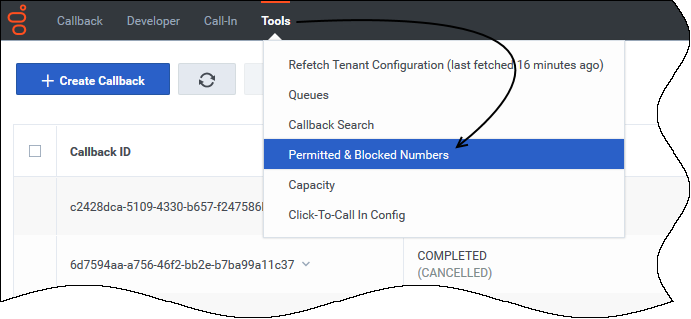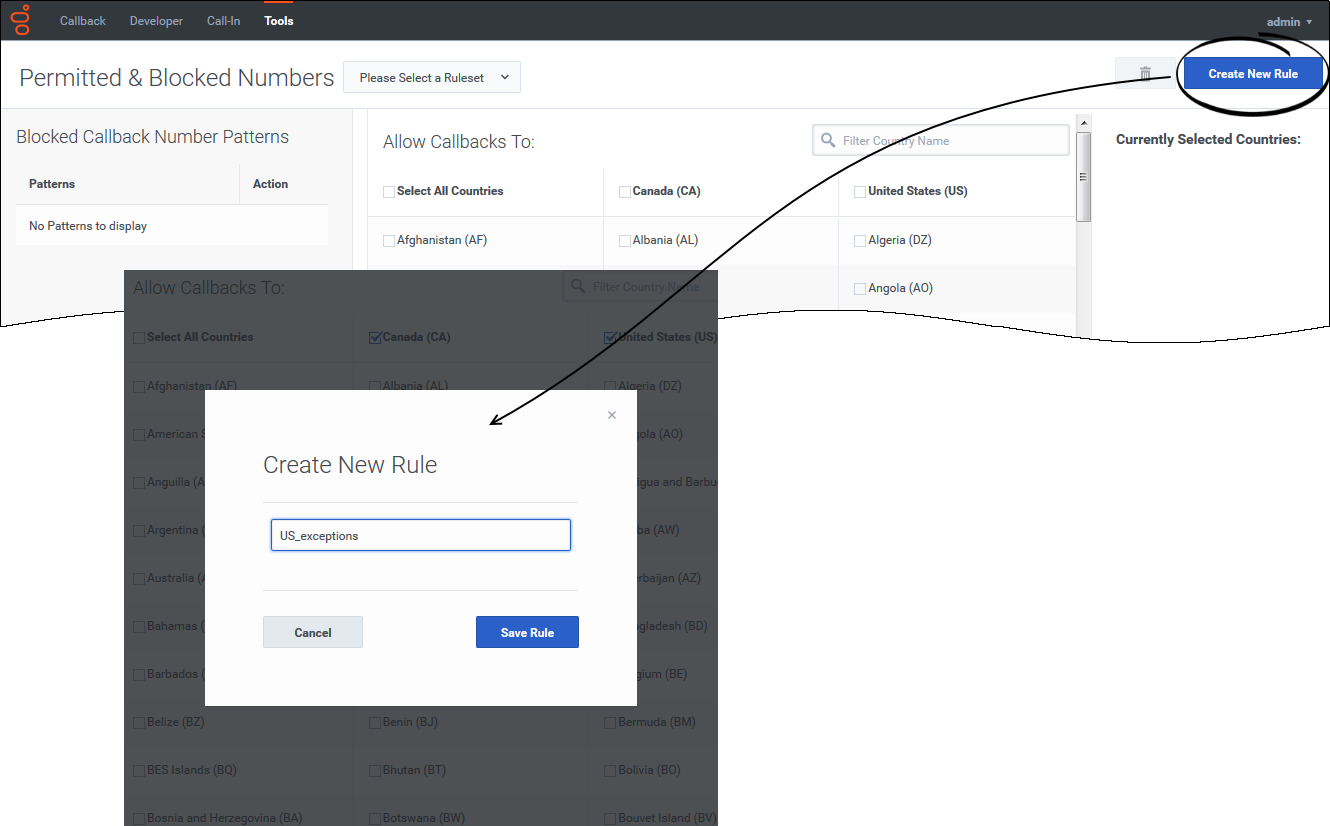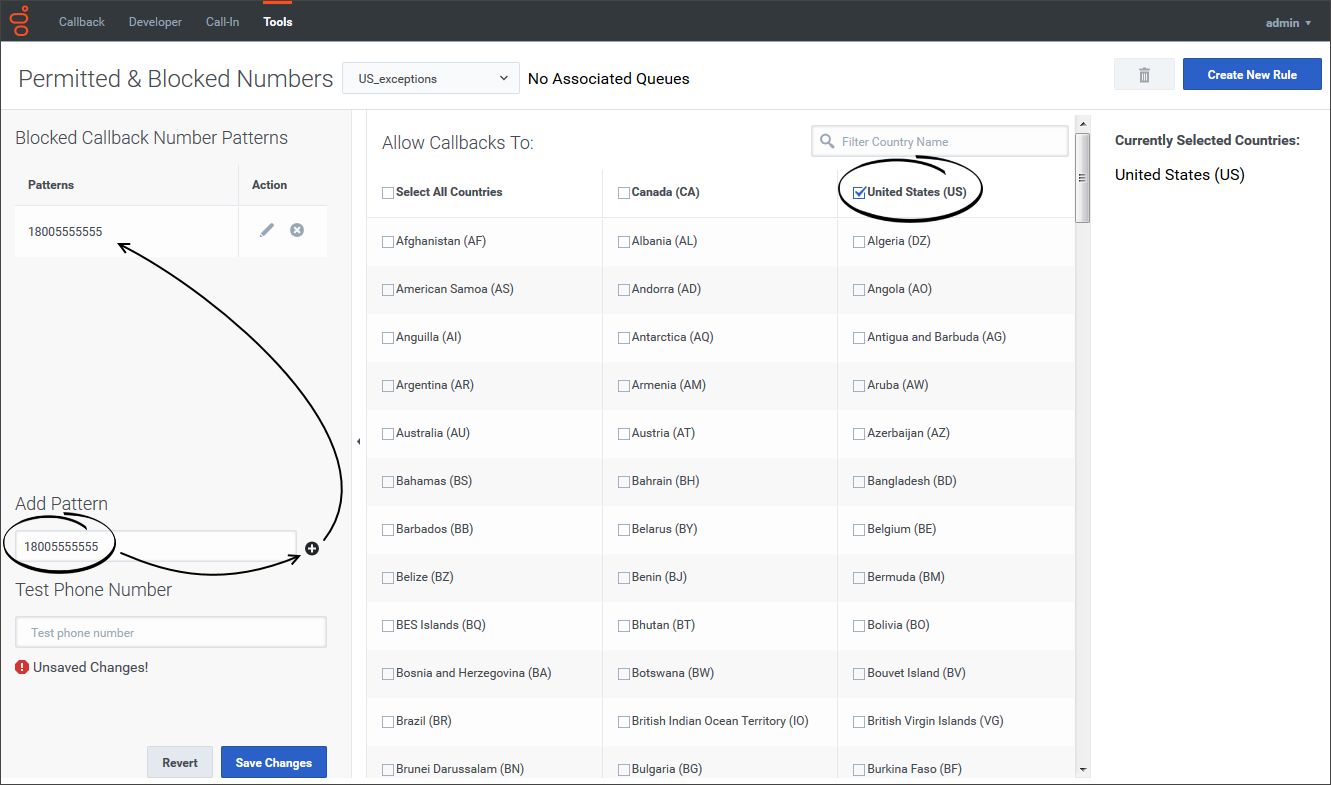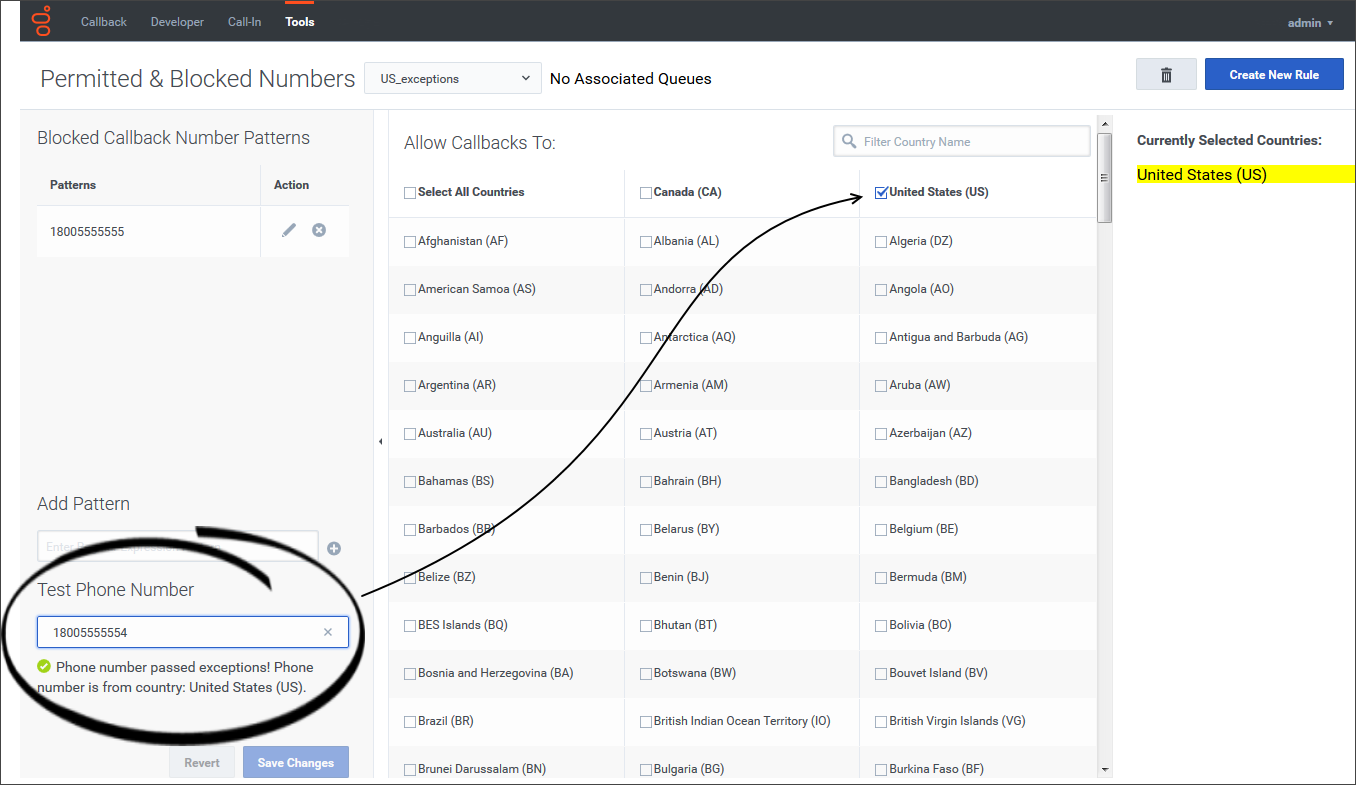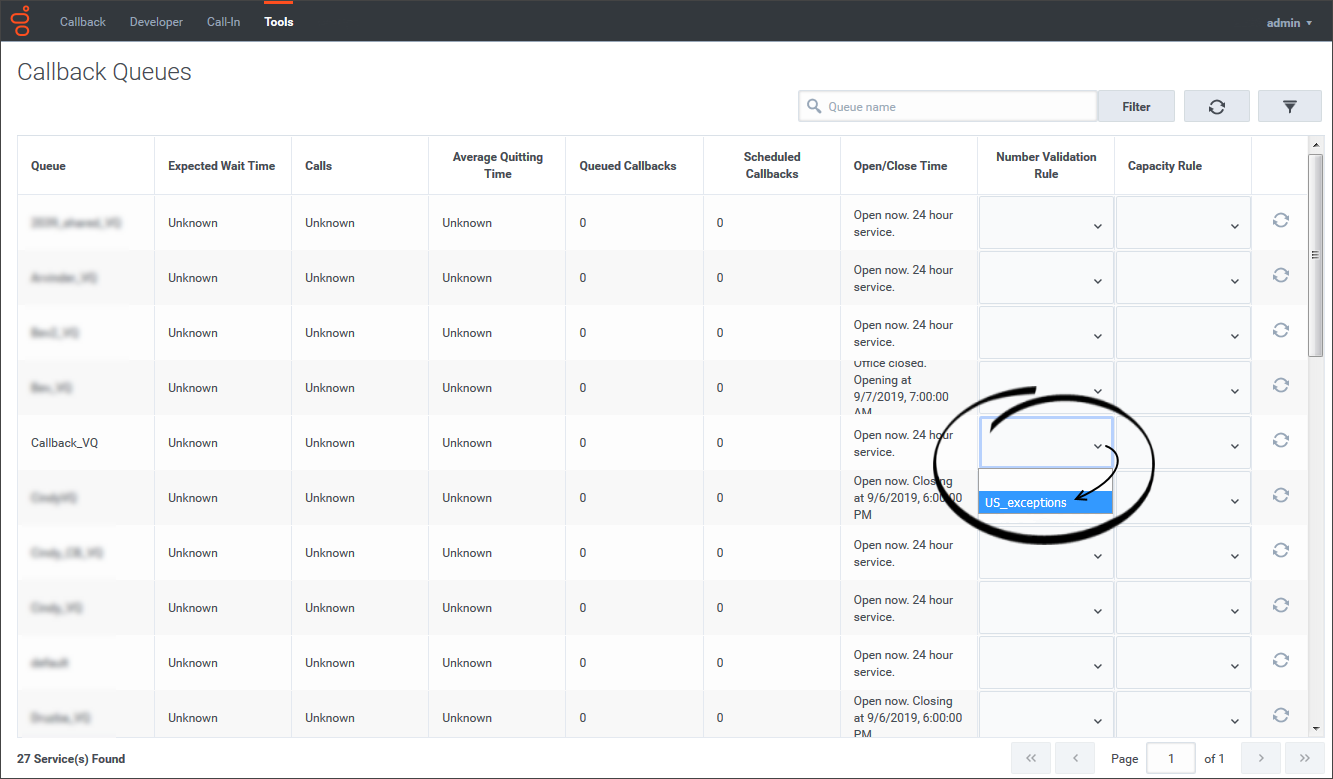Configuring Country and Number Validation Rules
To avoid initiating callbacks to certain countries or to numbers that you know to be fraudulent, you can now configure country and number validation rules on the Tools > Patterns page, and then assign those rules to queues on the Queues page. You can create a rule to specify the list of countries to which you permit callbacks for specific queues. You can also optionally enhance a rule by defining simple or complex (regular expression) numeric patterns that will block callback attempts to matching numbers.
Once a rule is configured, you can assign it to as many queues as necessary. It is important to note, though, that you can assign only one rule to each queue. Before creating a rule, consider to which queue or queues you will assign it and make sure that the rule incorporates the countries to which you permit callbacks for that queue as well as any numeric patterns in any of those countries that you want to "blacklist". Rules are checked before the system initiates a callback.
Configuring Country and Number Validation Rules
The first step in creating a new country and number validation rule is to give the rule a name. Later, you will need to pick the rule from a list when you assign it to a queue, so make sure the name is descriptive enough for you to understand what it allows and denies.
When creating a rule, you must select at least one country on the Patterns page. You can enter blocked number patterns only after you make country selections. Adding a country to the rule means that you allow callbacks to that country. For countries that are not added to a rule, no callback attempt will be initiated on the queue or queues to which the rule is applied. Selecting a country automatically saves it to the rule.
After you have selected the countries to which you allow callbacks, enter any patterns that you want to blacklist. Patterns must be entered as regular expressions. For example, if you have a list of suspicious phone numbers for the selected countries and you do not want the system to make callback attempts to those numbers, then add those to the rule. The figures on this page show the addition of specific numbers, but you could enter ^1234[0-9]+, which would match any phone number that starts with 1234. While a rule must contain at least one country, the addition of blocked number patterns is optional.
To add a blocked number pattern, simply enter it in the field and click "plus" (![]() ). Adding a pattern to the list of blocked numbers automatically saves it to the rule. You must enter patterns individually; that is, enter a pattern and add it to the rule before entering another pattern.
). Adding a pattern to the list of blocked numbers automatically saves it to the rule. You must enter patterns individually; that is, enter a pattern and add it to the rule before entering another pattern.
You can validate any number quickly using the Test feature on the Patterns page. For example, you might be troubleshooting an error and you want to see if a rule might be interfering with the callback.
Enter the number in the Test field for that rule. The number fails the rule's validation test if the number belongs to a country that is not added to that rule or if the number matches any one of the defined blocked number patterns.
If the number fails the check against allowable countries, then the system returns this reason for failure and does not validate the number against the blocked number patterns, even though the number might also fail that test. If the number passes the country validation test, then it is checked against the blocked number patterns.
If the number belongs to a country to which callbacks are allowed for that rule and the number is not listed within the blocked number patterns, then the system validates that the number is acceptable for callback attempts.
Assigning Rules to Queues
After you have configured at least one rule, you can assign the rules to your queues. You can assign a rule to multiple queues, but you can assign only one rule to each queue.
To assign a rule to a queue, navigate to the Tools > Queues page in your Callback UI. Locate a queue to which you want to assign a rule. You might need to filter the list of queues or search for a specific queue to locate what you're looking for. Once you find the queue, open the drop-down menu for that queue in the Number Validation Rule column. Select the rule that you want to assign to the queue. The rule is applied to the queue immediately and that change to the queue is saved automatically.

